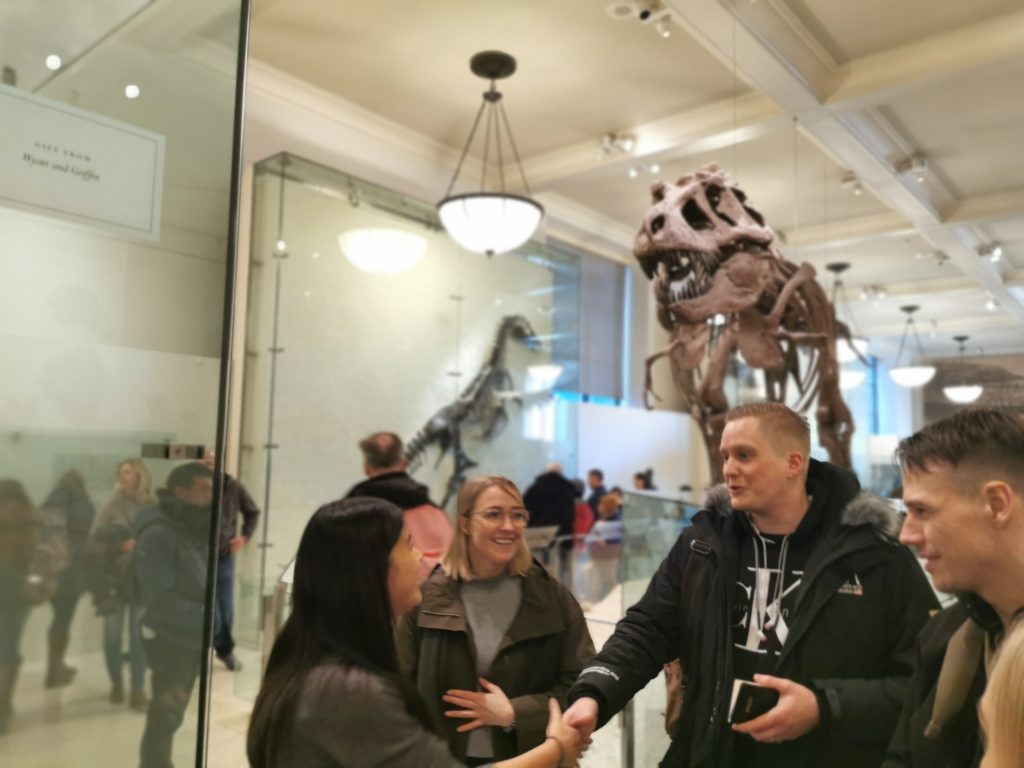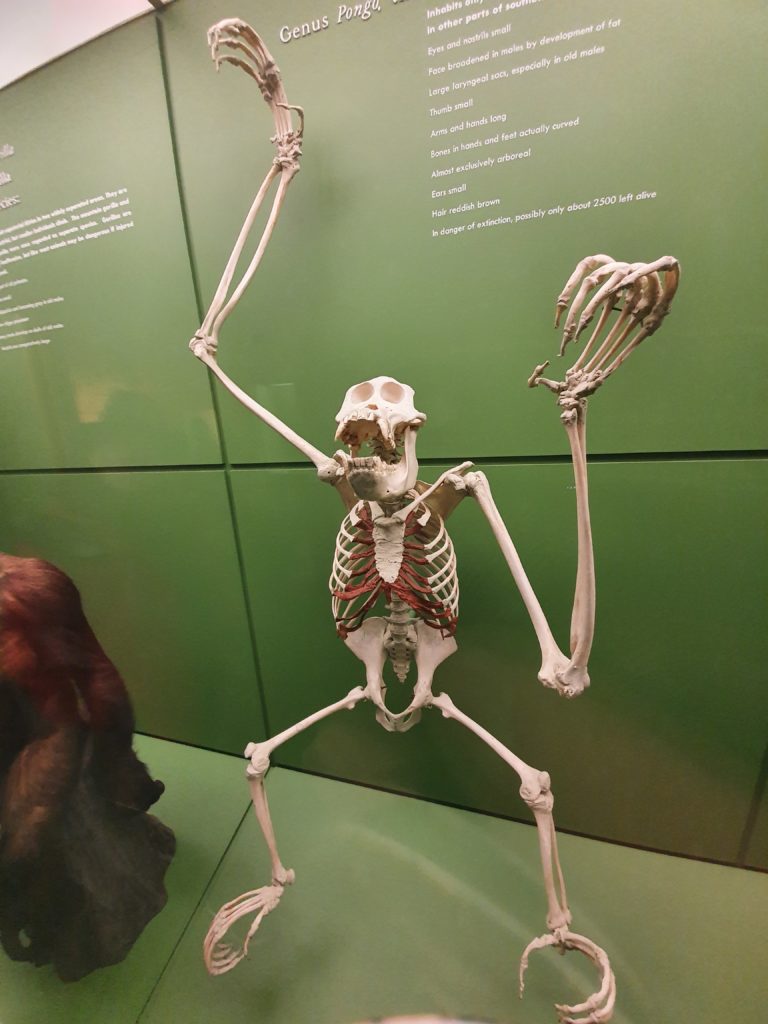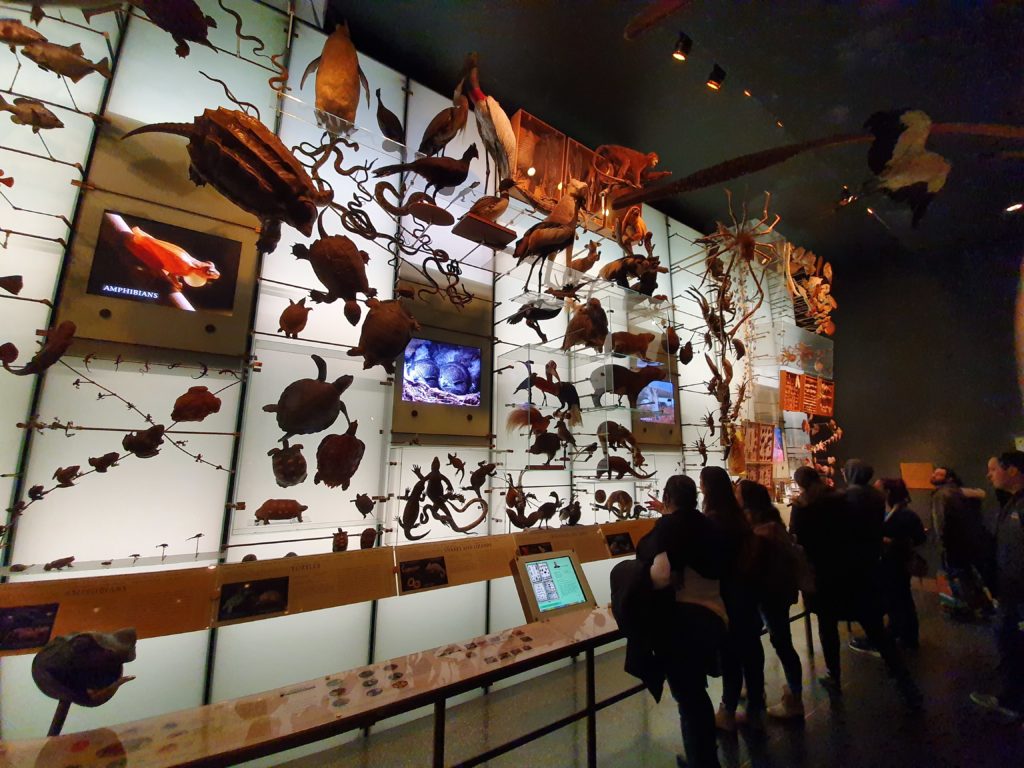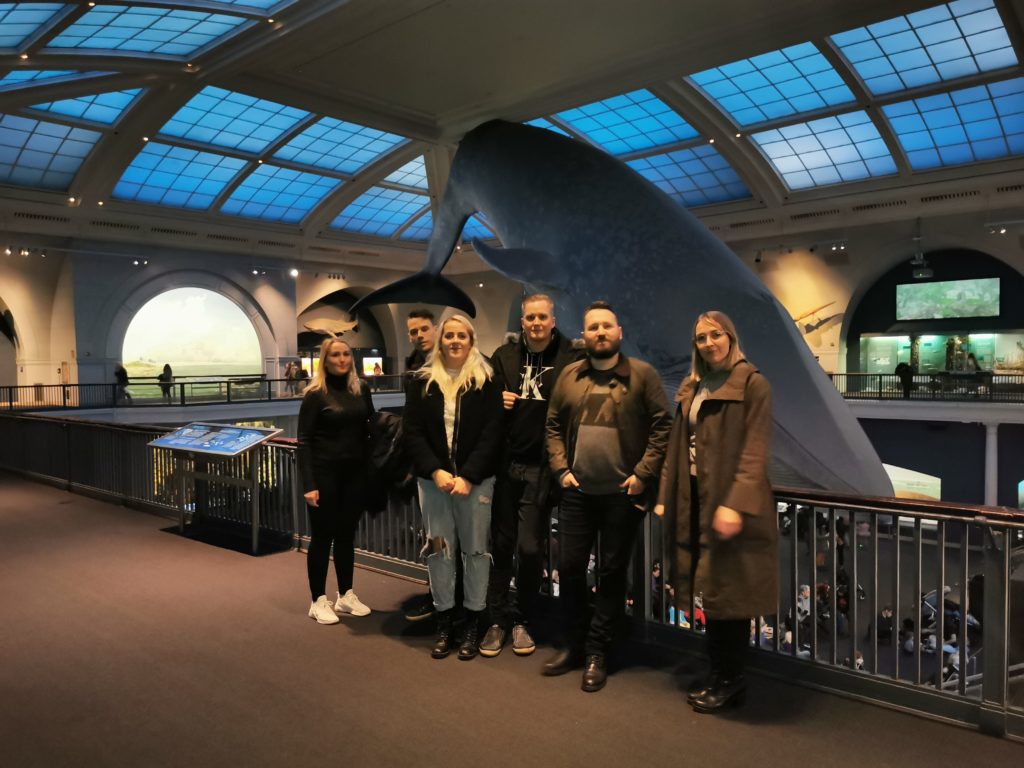The museum opened again today
The Húsavík Whale Museum opened today, after being closed since March 22nd because of a Covid related ban on gatherings. Opening hours in May are from 12-16. The museum is closed on Sundays. There is plenty of hand sanitiser by the counter. The 2 meter distance rule will be obeyed and please note that maximum capacity of guests is restricted to 50 people at the same time.
According to the museum’s project manager Heiðar Hrafn Halldórsson, the employees are relieved to being able to open the museum again, although they realize the visitors numbers will be low the first weeks. There were a few guests in the museum today which was a inspiring feeling compared to the lockdown weeks. The Húsavík Whale Museum should be a must-stop-place for this summer’s tourists, being built up by high quality exhibitions. The leading role so to speak is without a doubt the blue whale skeleton. The giant skeleton is one of only two on display in Europe.
Whale museum staff in a successful educational tour to ANHM, NYC
The Húsavík Whale Museum‘s employees went abroad in late February with their spouses, in a highly anticipated trip to New York City. The purpose of the trip was to visit the American Museum of Natural History (AMNH) with the goal to observe realistic ways of enhancing interactive- and digital experiences in the Whale Museum. The whale museum‘s staff got a chance to meet up with Jennifer Chow, the director of sales and strategy in the AMNH as well as Raphael Pelegrino, the digital product manager in the AMNH. The visit included a detailed tour of the ever so extraordinary museum. The rest of the weekend was spent in some of the endless activites of the big apple in a weather conditions that were ideal for Icelanders, cleas skies and sunshine with the temperature being natural for the current season.
The Húsavík Whale Museum‘s staff would like to thank their friends in the American Museum of Natural History for the warm welcome and are looking forward to a possible collaboration in the future.




Humpback whale – An introduction
Dear reader,
Whalecome at the introduction of the whales of Skjálfandi bay part 5. After the blue whale and the porpoise, the minke whale and the white-beaked dolphin lets introduce the humpback whale, the most commonly seen whale in Skjálfandi bay!
Latin name: Megaptera novaengliae
Common name: Humpback whale
Icelandic name: Hnúfubakur
Average
life span: 50 years
Diet: krill and small schooling fish
Size: 13 – 17 meters
Weight: 25-45 tonnes
Humpback whales are one of the largest whales, with males reaching lengths of 14 meters and females reaching lengths of 17 meters, about the size of a school bus. The pectoral flippers are a third of their body length and can reach the length of 6 meters. Humpback whales are active swimmers and can be seen breaching, tail slapping and flipper slapping. It is theorized that the breaching and tail/flipper slapping is a way of communicating with each other, but may also be used to show dominance and health during the mating season. Humpback whales also use vocalization to communicate with each other, males are known to sing during the mating season. A song can last up to 30 minutes and can be heard from over 30km away.
The year of the
humpback whale is split up in 2 sections feeding and breeding. During the
summer humpback whales can be found in colder nutrient rich waters like
Iceland, Norway and Canada, where they feed on krill. During the winter the
humpback whales can be found in warmer waters round the equator like the
Caribbean. Here the humpbacks mate and give birth. The gestation period of
humpback whales is 11 months. When a calf is born its 4,5 meters in size and
weighs 900kg. Calves can drink up to 600L milk per day. Mother and calf
communicate with each other through by whispering, this is so that they cannot
be overheard by predators such as orca´s (killer whale).
Humpback whales are baleen whales and thus use filter feeding to feed. Humpback
whales are known to use several techniques to feed, one of these techniques is
bubble net feeding. With bubble net feeding a humpback whale blows air from the
blow hole trapping the fish and krill to the surface and then feeds on the fish
and krill. Humpback whales dive on average round 5 to 10 minutes, but up to 40
minutes has been recorded. When humpback whales are travelling the swim between
5-15 km/h, when feeding they slow to a 2-5,5 km/h, the max speed they can reach
is 25km/h.
Humpback whales can be seen in Skjálfandi Bay for a great majority of the year, though their prime season is in the summer months.
Hvalir í Skjálfandaflóa: Hnúfubakur
Þá er komið að síðustu færslunni um algengustu hvalategundirnar í Skjálfandaflóa. Nú verður fjallað um hnúfubakinn sem er sú hvalategund sem oftast sést í skoðunarferðum í flóanum.
Latneskt heiti: Megaptera novaengliae
Enskt heiti: Humpback whale
Íslenskt heiti: Hnúfubakur
Meðalaldur:
50 ár
Fæðuval: Ljósáta og litlir
fiskar
Stærð: 13 – 17 metrar
Þyngd: 25-45 tonn
Hnúfubakar skipa eina stærstu hvalategundina, þar sem karldýrin ná 14 metra lengd og kvendýrin upp í 17 metra lengd – svipað og meðalstrætisvagn! Bægslin eru rétt um þriðjungur af lengd dýranna og geta orðið allt að 6 metrar. Hnúfubakar hafa mikla hreyfiþörf og má reglulega sjá þá stökkva upp úr sjónum eða slá sporðum og bægslum. Kenningar eru til um að þessi hegðun sé þeirra aðfer til að hafa innbyrðis samskipti en einnig gæti þetta verið aðferð til að sýna félagslega yfirburði og góða heilsu á fengitíma. Hnúfubakar nota einnig hljóðmerki eril að hafa samskipti við hvern annan. Karldýrin syngja á fengitíma og getur hvert “lag” verið upp í hálftíma langt og heyrst í allt að 30 km fjarlægð.
Árið er tvískipta hjá hnúfubökum. Annarsvegar í fæðuöflun og hinsvegar fengitíma. Á sumrin má finna hnúfubaka í köldum og næringarríkum sjó, t.a.m. við strendur Íslands, Noregs og Kanada þar sem þeir borða ljósátur. Á veturnar flytjast þeir búferlum til hlýrri svæða nýr miðbaug, t.a.m. í Karabíahaf. Hnúfubakar makast og eignast afkvæmi í hlýjum sjó. Meðgöngutímabilið er 11 mánuðir. Þegar að kálfarnir koma í heiminn eru þeir um 4,5 metra langir og 900 kg að þyngd. Þeir geta drukkið upp í 600 lítra af mjólk á dag. Móðir og afkvæmi eiga samskipti með “hvísli” sem er til þess að varast rándýr svo sem háhyrninga.
Hnúfubakar eru skíðishvalir og nota síunaraðferð (filter feeding) til fæðuinntöku. Þeir eru þekktir fyrir að hafa nokkrar aðferðir til fæðuinntökunnar. Ein af þeim er svokölluð loftbóluaðferð. Hún virkar þannig að hnúfubakurinn blæs lofti frá blástursopinu þannig að bráðin færist upp á yfirborð sjávar. Þá ráðast þeir til atlögu og gleypa fæðuna.
Hnúfubakar kafa að meðaltali um 5-10 mínútur í einu en geta kafað allt upp í 40 mínútur. Sundhraðinn er um 5-15 km/klst en þegar þeir eru að borða hægist á þeim niður í 2,5-5 km/klst. Hámarkshraði þeirra er hinsvegar um 25 km/klst.
Hnúfubakar eru sem áður segir mjög algeng sjón í Skjálfandaflóa og hefur viðvera þeira aukist síðustu árin. Aðaltímabil þeirra er vissulega á sumrin en það ætti þó að vera hægt að sjá hnúfubak flesta daga frá maí til nóvember.
The Minke Whale – An Introduction
Dear reader,
Whalecome at the introduction of the whales of Skjálfandi bay part 3. After the blue whale and the porpoise lets introduce the minke whale!
Latin name: Balaenoptera acutorostrata
Common name: Minke whale
Icelandic name: Hrefna
Average
life span: 50
years
Diet: krill and small fish
Size: 6 – 10 meters
Weight:
10
tons
Minke whales are one of the smallest of the baleen whales. There are two different species of minke whales, the common (northern) minke whale and the Antarctic (southern) minke whale. The northern minke whale can be found round Iceland.
Minke whales, like other baleen whales, use the filter feeding technique to feed. Minke whales mostly live individually. The max speed for minke is 40km/h, on average they swim between 5-25 km/h. Minke whales have one predator, groups of orca´s (killer whales). The chases of Orca´s and minke whales can last up to 1 hour. Minkes are known by some people as stinky minke, due to their bad breath, when you are close to a minke and it breaths out you can smell the breath. The dive times of minke whales are up to 20 minutes, on average 3- 5 minutes. Minke whale do not show their tail (fluke) when they go for a dive.
Minke whales become sexually mature at the age of 6, like most baleen whale minkes migrate at the end of summer to warmer waters in the south (near the equator). Here they mate and give birth, the gestation period of minke whales is 10 months. When the calf is born its 2,5 meters long and weighs 450 kg. In 6 months they have doubled in size.
Unfortunatly minke whales are one of the whale species that is still being hunted by Japan. The japanese government has allowed for 52 minke whales to be hunted in 2019. The Antarctic minke whale has the status of near threatened according to IUCN red list.
Minke whales in Skjálfandi bay can be seen throughout the year in Skjálfandi, however the chance are getting smaller. This is because warming of the sea waters which causes the prey of the minkes to move further north, which means that the minkes followed their prey.
Successful whale watching season in Húsavík
Today is August 1st. The Icelandic tourism season is at its peak point. Currently there‘s a mind-blowing 22 degrees celcius in Húsavík (for locals that‘s extremely warm) and the town is therefore very much alive. June was quite cold in Húsavík and the first part of July as well. The number of tourists have matched expectation for most parts though. The whale watching season in Húsavík have been very successful whith a usual sightings of humpack whales, blue whales, minke whales, white beaked dolphins and harbour porpoises, the killer whale has also been spotted on a more regular occasion than usual.
The Húsavík Whale Museum is open every day in August from 8:30-18:30. Tickets can now be bought via our webpage.
Photo by: Christian Schmidt